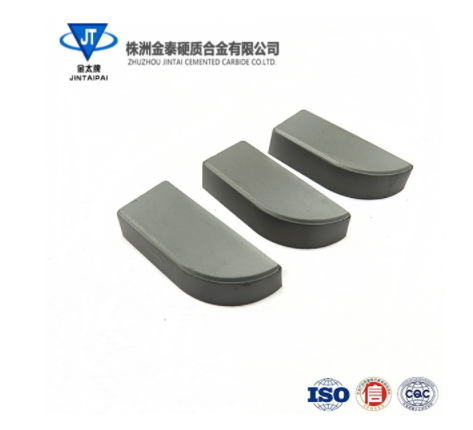Carbide welding inserts are relatively common tool inserts for metal cutting on cutting machine tools. They are generally used on turning tools and milling cutters.
Nine key points for using carbide welding blades:
1. The structure of welded cutting tools should have sufficient rigidity. Sufficient rigidity is guaranteed by the maximum allowable external dimensions, the use of higher strength steel grades and heat treatment.
2. The carbide blade should be firmly fixed. The carbide welding blade should have sufficient fixation and firmness. This is guaranteed by the tool groove and welding quality. Therefore, the blade groove shape should be selected according to the blade shape and tool geometric parameters.
3. Carefully check the tool holder. Before welding the blade to the tool holder, necessary inspections must be made on the blade and tool holder. First, check that the blade supporting surface cannot be severely bent. The carbide welding surface must not have a serious carburized layer. At the same time, The dirt on the surface of the carbide blade and the groove of the tool holder should also be removed to ensure reliable welding.
4. Reasonable selection of solder In order to ensure the welding strength, appropriate solder should be selected. During the welding process, good wettability and fluidity should be ensured, and bubbles should be eliminated so that the welding and alloy welding surfaces are in full contact without missing welding.
5. To correctly select the flux for welding, it is recommended to use industrial borax. Before use, it should be dehydrated in a drying furnace, then crushed, sieved to remove mechanical debris, and set aside for use.
6. Use mesh compensation gaskets when welding high titanium, low cobalt fine particle alloys and welding long and thin alloy blades. In order to reduce welding stress, it is recommended to use sheets with a thickness of 0.2–0.5mm or a mesh with a diameter of 2–3mm. The mesh compensation gasket is welded.
7. Correctly adopt the sharpening method. Since the carbide blade is relatively brittle and highly sensitive to crack formation, the tool should avoid overheating or rapid cooling during the sharpening process. At the same time, a grinding wheel with appropriate particle size and a reasonable grinding process should be selected. , to avoid sharpening cracks and affecting the service life of the tool.
8. Install the tool correctly. When installing the tool, the length of the tool head extending out of the tool holder should be as small as possible. Otherwise, it will easily cause the tool to vibrate and damage the alloy piece.
9. Correctly regrind and grind the tool. When the tool is blunt after normal use, it must be regrinded. After regrinding the tool, the cutting edge and tip fillet must be ground with a whetstone. This will increase the service life and Safety and reliability.
Post time: Sep-06-2024













